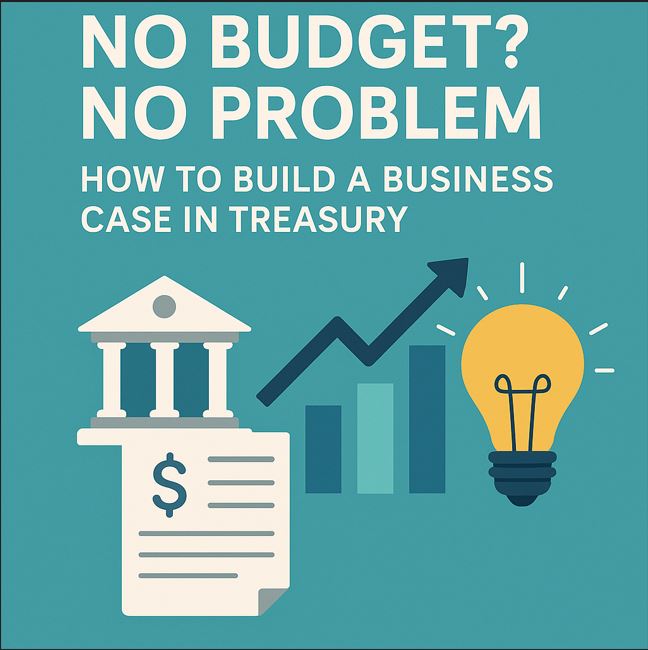In corporate finance, even though treasury teams manage cash, risk, and funding – the lifeblood of any business – they’re sometimes under-resourced.
The common objection?
“Patrick, I really need support in my treasury team… but I don’t have the budget.”
This line keeps haunting me like a missing policy note during an S&P review.
I get it. Treasury isn’t always top of mind when the CFO’s slicing up the budget pie. But here’s the thing – no budget doesn’t always mean no support. It simply demands a smarter playbook.
The Secret: You Don’t Need Budget, You Need ROI
In treasury, we’re used to working with constraints. Limited visibility. Legacy systems. Small teams.
But if there’s one thing I’ve learned over the years, whether while running Pecunia, working on implementation projects, or building the Treasury Masterminds community:
If you can show value, the budget often follows.
The truth is , you don’t need a budget …. You need a Business Case
When there’s no room for a full-time hire or big project, the focus shifts to one thing: ROI.
So here’s what I often suggest: instead of asking for a major commitment upfront, let’s start small. Locate Treasury’s weakest link or lowest performance points. That’s usually where the return is hiding.
Identifying Treasury’s “Soft Spots” for Quick Wins
These are common areas where hidden value leaks out of the treasury function:
- Poor visibility into global cash positions
- Inefficient intercompany payments
- High FX costs due to inaccurate forecasting
- Outdated banking structures that haven’t been reviewed in years
These issues often go unnoticed because teams manage to “get by”. But coping isn’t optimizing, and that’s where the opportunity lies.
Case study: Turning a Hunch into a Greenlight
A while back, a client approached us with a hunch: “I think a global IHB (in-house bank) could really help us. But I can’t get the CFO to approve anything based on a feeling.”
Fair point. We proposed a three-week part-time consultancy sprint to build the business case, rather than pitching a full-scale project.
During that sprint we:
- Analyzed intercompany flows
- Looked at netting potential
- Mapped banking structures
- Benchmarked interest rate spreads`1
The result? A clear, quantified business case.
- Reduction in IC payments
- Netting potential with real numbers
- Interest arbitrage savings
- Streamlined reconciliation
That small upfront investment gave the CFO the hard numbers to greenlight the full IHB implementation. Six months later, it was live, delivering measurable savings and a strong ROI.
Why This Works: It’s About Solving, Not Selling
This approach isn’t a sales pitch, it’s a mindset shift.
Support doesn’t always mean hiring a full-time FTE. Sometimes it’s a focused project, a quick scan, or just a solid conversation to shape the idea.
And sometimes, you don’t even know exactly what you need yet, just that something’s not running as it should.
That’s fine too. Let’s talk. Brainstorming sessions are always free, we can do them regularly, not just one off. No strings, no pressure.
We’ll look at:
- Where your treasury function is leaking value
- How to translate that into numbers
- Whether there’s a case for small-scope support with big-impact potential
Final Word: Treasury Deserves Better
Treasury shouldn’t have to fight for scraps. You’re managing cash, risk, funding, all core to business performance. If you’re under-resourced, the risk is not just inefficiency. It’s a missed opportunity.
Let’s fix that.
Curious what kind of value is hidden in your treasury function?
Reach out, and we’ll figure it out together.













